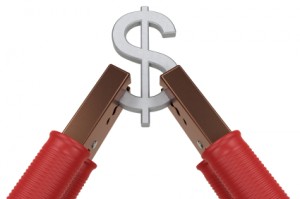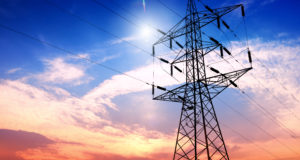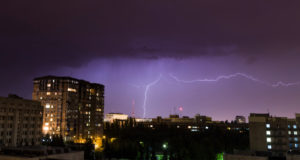This is part two of our original “Building A Battery Bank For Your Off-Grid Energy Needs“
Building a battery bank will allow you to harness the maximum technical advantage from your alternative power generation techniques. However, electricity and stored power are a couple of intimidating technologies and offer some daunting challenges.
Most important of all, if you are not completely comfortable and confident in your skills, do not risk the potentially life-threatening events that can result from simple mistakes. In general, step-by-step processes can minimize your risk, but you should be comfortable in your tools, techniques, and resources. If you are not confident, there are plenty of consultants and electricians that can be hired at reasonable costs if you look for them. If in doubt, consider this option.
 Firstly, you should know your needs. America uses more electricity on average per family than any other region or country: some 12,000 MWh per year or so. Some states used on average more than 16,000 MWh last year (Tennessee for example), and on average, off-the-grid families use about a third to two-thirds of that figure – about 5,000 to 9,000 MWh, with many much lower than that. Don’t limit yourself, but don’t spend frivolously for energy you don’t need, either. Calculate your usage by averaging your highest three bills (if grid-tied) and multiplying by twelve, and then adding a 35 percent buffer to the top to get a high-end number. If you live in a hot climate, you may be looking at your three highest months in summer, and if you are in a colder area, it may be wintertime. Be sure to add some buffer for the solid state fuels you use, even if you plan on continuing to use them after obtaining a large source of electricity (ex. wood and propane). It isn’t irresponsible or unnecessary to use liberal numbers, because you will inevitably use more energy than you think when converting from DC to AC electricity, and when your “inefficient” equipment is gathering less than their stated minimums as a result of weather patterns or poor infrastructure.
Firstly, you should know your needs. America uses more electricity on average per family than any other region or country: some 12,000 MWh per year or so. Some states used on average more than 16,000 MWh last year (Tennessee for example), and on average, off-the-grid families use about a third to two-thirds of that figure – about 5,000 to 9,000 MWh, with many much lower than that. Don’t limit yourself, but don’t spend frivolously for energy you don’t need, either. Calculate your usage by averaging your highest three bills (if grid-tied) and multiplying by twelve, and then adding a 35 percent buffer to the top to get a high-end number. If you live in a hot climate, you may be looking at your three highest months in summer, and if you are in a colder area, it may be wintertime. Be sure to add some buffer for the solid state fuels you use, even if you plan on continuing to use them after obtaining a large source of electricity (ex. wood and propane). It isn’t irresponsible or unnecessary to use liberal numbers, because you will inevitably use more energy than you think when converting from DC to AC electricity, and when your “inefficient” equipment is gathering less than their stated minimums as a result of weather patterns or poor infrastructure.
Once you have a baseline number, shoot for a battery bank at that level of storage power, but factor in the following variables as well:
- How long is the winter?
- How much sun/wind/water flow/etc. can you expect on the yearly average (factoring the last fifteen years)?
- What is the stated efficiency of your equipment?
- What is the cycle length and capacity of your battery bank?
- How will you supplement your equipment?
Also, avoid factoring in your diesel or backup generators into the equation, as they should be standalone implementations and should not be reliant on the infrastructure you are building, nor should your system be reliant on them to achieve certain levels of performance.
Try your best to also avoid factoring in your cooking fuels unless you rely on them heavily for whole-home heating or space heating and they impact your overall energy consumption more than 15 to 25 percent (for example, wood in a wood boiler or a wood-burning stove).
Amazing “Solar Generator” Is Like Having A Secret Power Plant Hidden In Your Home!
The most efficient battery bank systems will usually use piggybacking to increase each “bank segment” to the proper voltage (12V, 24V, or 48V); ideally, they should use 2V or 6V batteries of the deep-cycle variety.
Using these types of batteries instead of 12V sealed batteries will lower costs and make sustainable energy possible. Sealed batteries are at risk for explosion and battery drain beyond safe levels, unlike deep-cycle, low-voltage batteries, which offer flexibility and long drain times with low charge times: perfect for wind, water, and solar applications.
An inverter will be used in most cases to convert the 12V, 24V, or 48V source to 120V power on AC. 2V batteries are nearly perfect for a typical battery bank, and while they are more difficult to come by then your standard 6V golf cart battery or a regular car battery (not recommended for battery banks due to their aversion to deep cycle drains), they provide deep cycle capabilities and larger capacity to avoid power drain concerns and overuse on each battery.
Batteries of this type cost about $300 to $800 each but provide a substantially larger power backup than small batteries (like the 6V mentioned above). Piggybacking the batteries to create a 12V, 24V, or 48V setup will give you excellent control over your battery usage and increase your capacity to a reasonable amount for in home distribution.
Batteries work on a depth of discharge theory, meaning that the more each battery is depleted per cycle, the lower the life expectancy will be. So the obvious way to combat premature replacement is to make a larger bank or larger strings of batteries, and put back as much of the charge with active power production as possible. Using more batteries in your bank, larger batteries, or dialing back the system usage will all prevent early replacement.
Using charge controllers and a full sine wave inverter will be normal additions to a full battery bank setup. These items will allow you to have a less hands-on approach with your components, for them to function with stops and controls, and maintain a level suitable for sensitive electronics and with full power.
Because the process of building a battery bank and the wiring diagrams are difficult to adequately represent on a website like this effectively, it is not prudent to explain design ideas for your specific application, but many do-it-yourself websites have decent plans for such a project. Many books also exist to help you through the process as well. Suffice it to say, the idea behind an efficient battery bank system is to be bigger than you need by some degree, have the capability of charging and managing overcharging and discharge, and to be safe. Having a well-ventilated and secured location for your bank of batteries will be important, and understanding the maintenance characteristics of your component parts will be paramount to your success in such an endeavor, so do not skimp on cabling, wiring, charge controllers, safety items, weather protection, and battery type. Even if you are cutting corners to save money, do your best to think through the connections involved in your system, as the weak link is usually underrated wiring and under capacity components. Use a high-quality inverter, and make sure to match your power generation items to their stated minimum efficiencies to be sure of your total peak production. In short, know your system well, whether it is installed by you or by someone else, and try to avoid cutting costs on the integration parts like connectors and cabling.
©2012 Off the Grid News
 Off The Grid News Better Ideas For Off The Grid Living
Off The Grid News Better Ideas For Off The Grid Living




